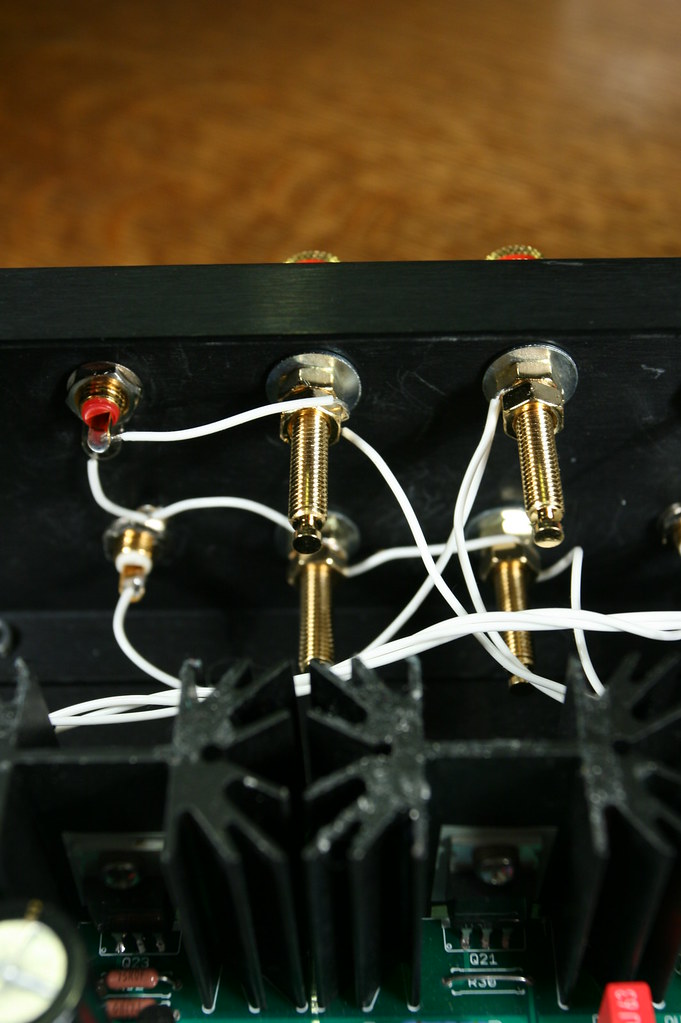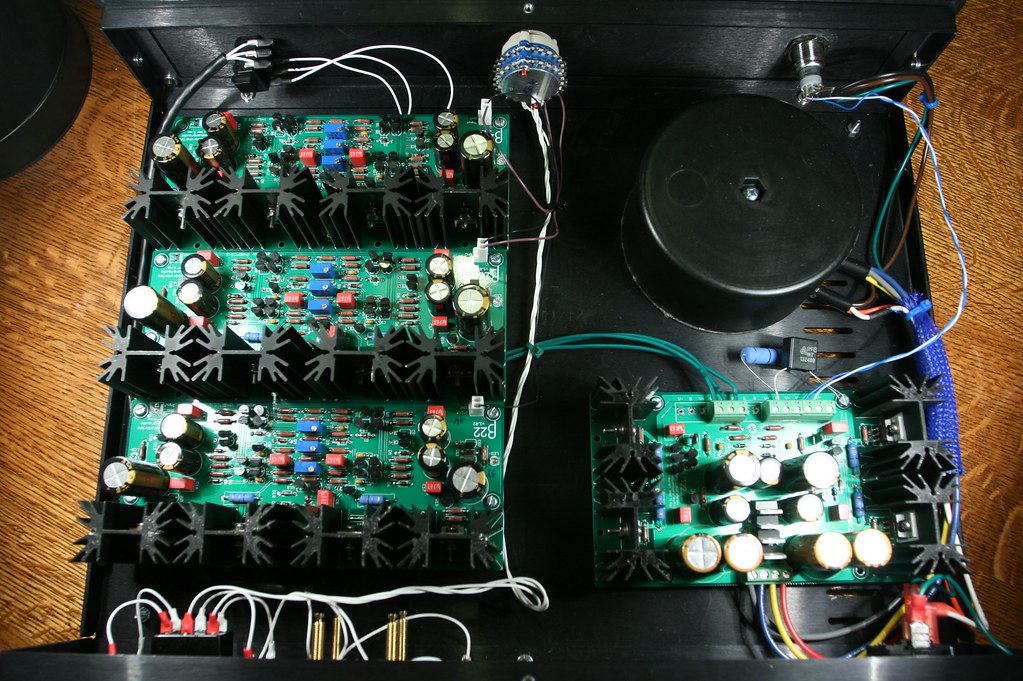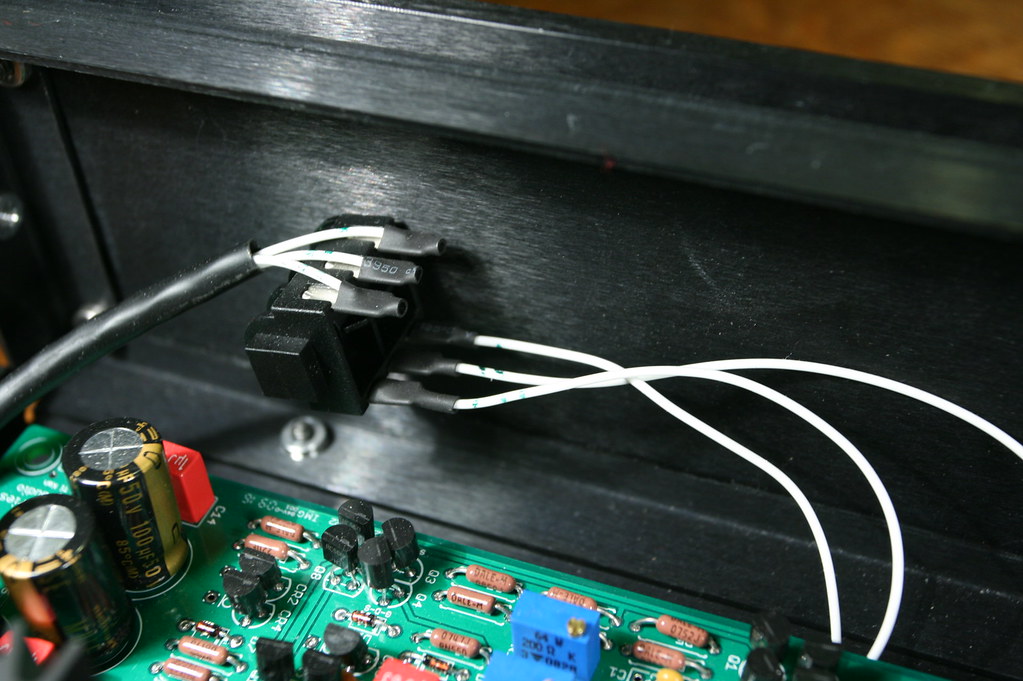oneplustwo
Member of the Trade
- Joined
- Jan 27, 2009
- Posts
- 558
- Likes
- 10
Hey folks,
So I built a B22 with a switched neutrik headphone jack. The idea was for the signal to go "through" the jack when headphones weren't plugged in to feed a pair of speaker jacks and RCA jacks.
Everything worked fine with the headphones by themselves but when speakers were plugged in, nothing happened. Tried it with the headphones plugged in as well, also nothing. No smoke or popping heard, but now, it doesn't work with just the headphones plugged in by themselves either.
I should note that I forgot to install the zobel network across the speaker posts.
Any thoughts about what could be wrong? Could the missing zobel network have broken something or is that just a minor issue that needs to be corrected at some point?
So I built a B22 with a switched neutrik headphone jack. The idea was for the signal to go "through" the jack when headphones weren't plugged in to feed a pair of speaker jacks and RCA jacks.
Everything worked fine with the headphones by themselves but when speakers were plugged in, nothing happened. Tried it with the headphones plugged in as well, also nothing. No smoke or popping heard, but now, it doesn't work with just the headphones plugged in by themselves either.
I should note that I forgot to install the zobel network across the speaker posts.
Any thoughts about what could be wrong? Could the missing zobel network have broken something or is that just a minor issue that needs to be corrected at some point?







